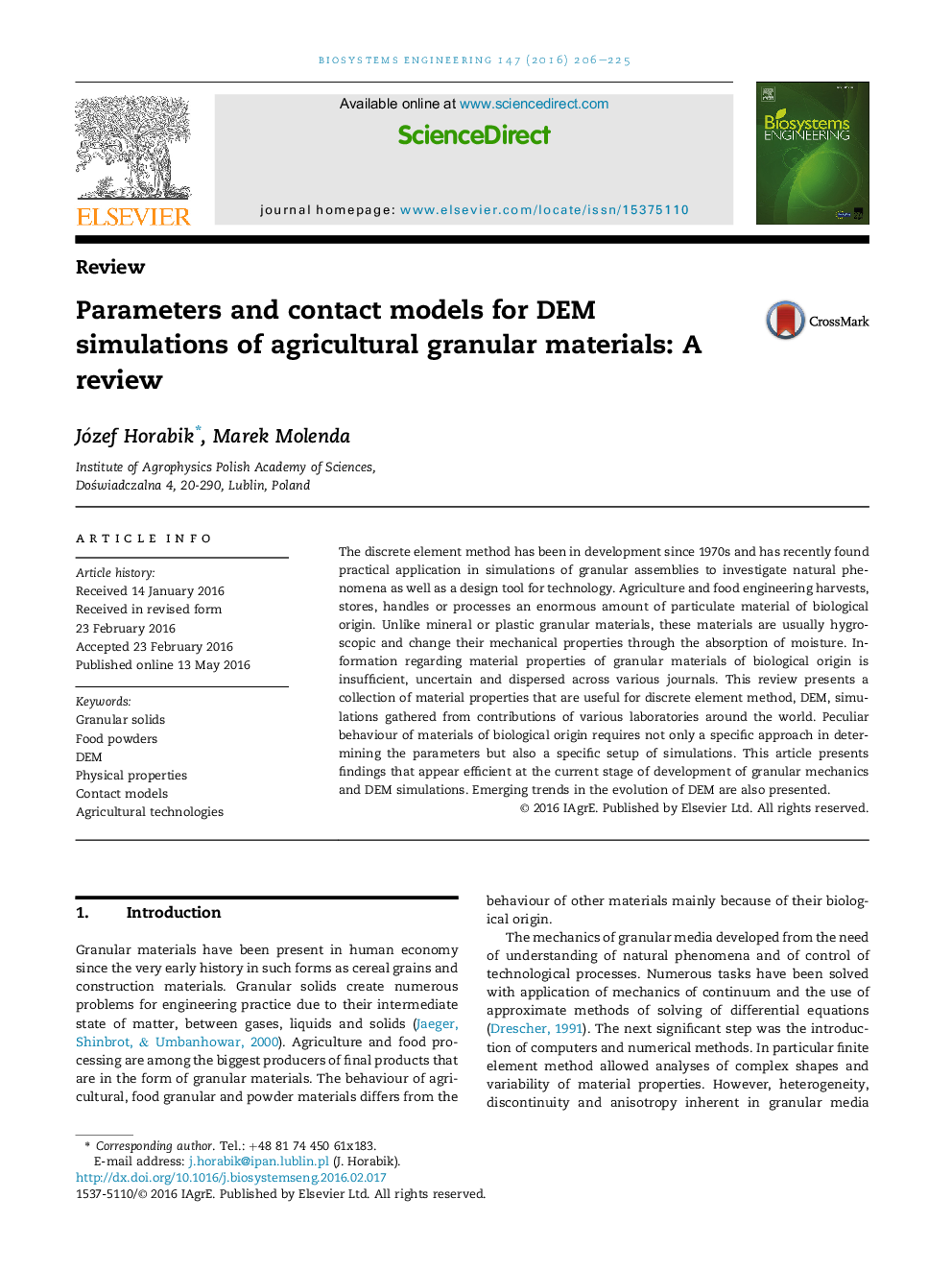| Article ID | Journal | Published Year | Pages | File Type |
|---|---|---|---|---|
| 1710792 | Biosystems Engineering | 2016 | 20 Pages |
•Review of agricultural material parameters for DEM modelling.•Contact models reviewed and characterised.•Models of representation of shape of particles discussed.•Recommendations for selection of material parameters and contact models.•Emerging trends in evolution of DEM applied for agricultural grains outlined.
The discrete element method has been in development since 1970s and has recently found practical application in simulations of granular assemblies to investigate natural phenomena as well as a design tool for technology. Agriculture and food engineering harvests, stores, handles or processes an enormous amount of particulate material of biological origin. Unlike mineral or plastic granular materials, these materials are usually hygroscopic and change their mechanical properties through the absorption of moisture. Information regarding material properties of granular materials of biological origin is insufficient, uncertain and dispersed across various journals. This review presents a collection of material properties that are useful for discrete element method, DEM, simulations gathered from contributions of various laboratories around the world. Peculiar behaviour of materials of biological origin requires not only a specific approach in determining the parameters but also a specific setup of simulations. This article presents findings that appear efficient at the current stage of development of granular mechanics and DEM simulations. Emerging trends in the evolution of DEM are also presented.
Graphical abstractFigure optionsDownload full-size imageDownload as PowerPoint slide
